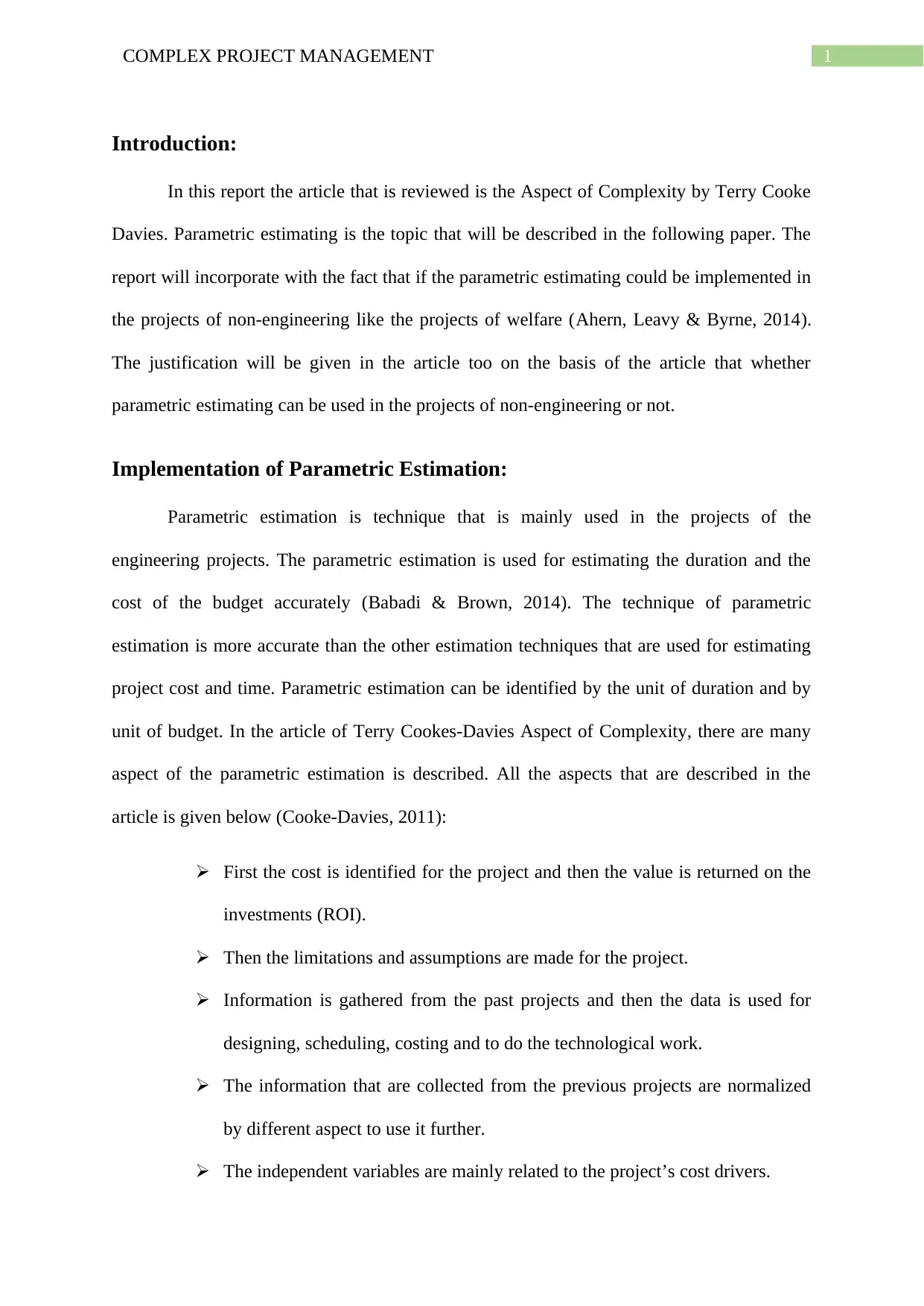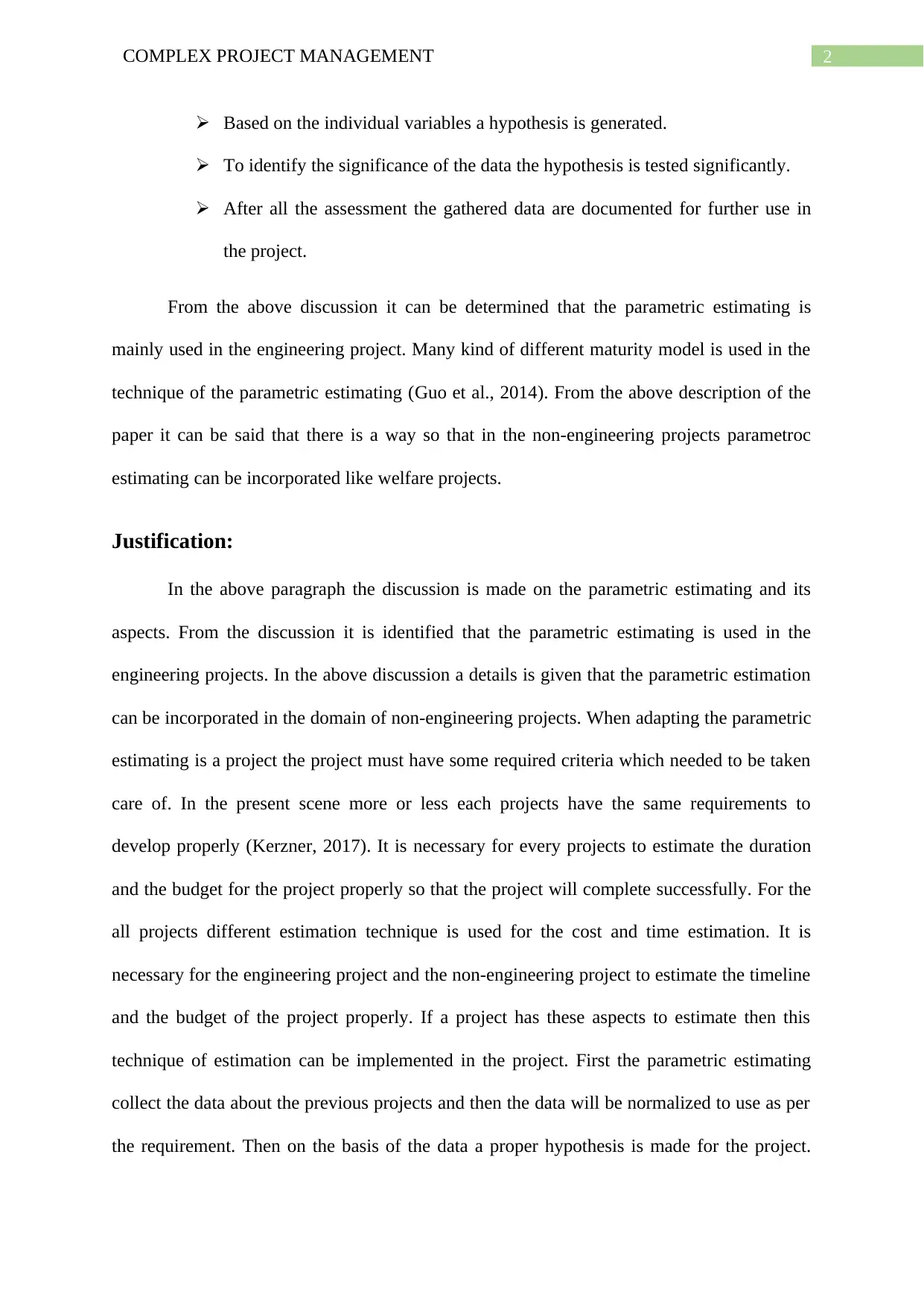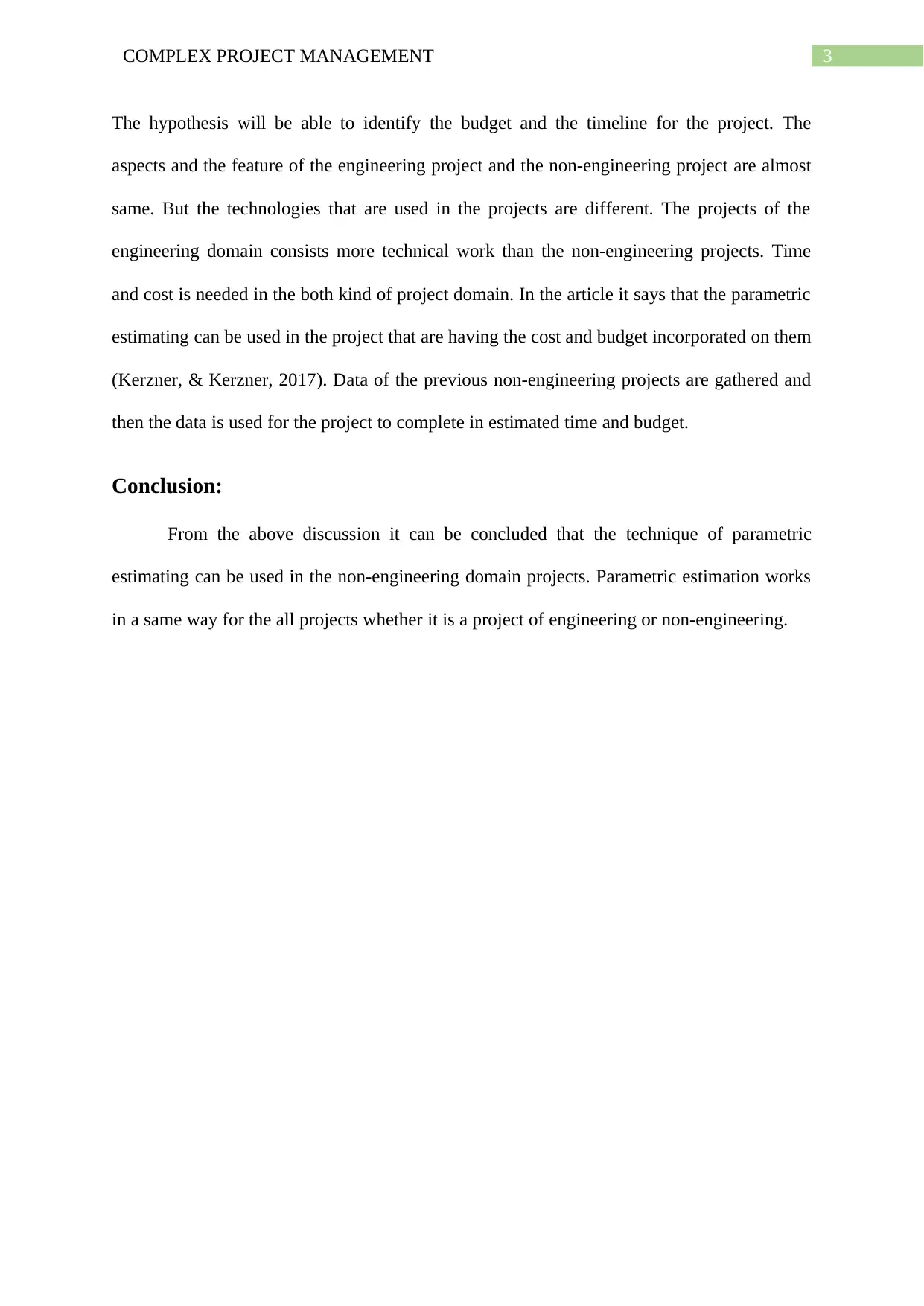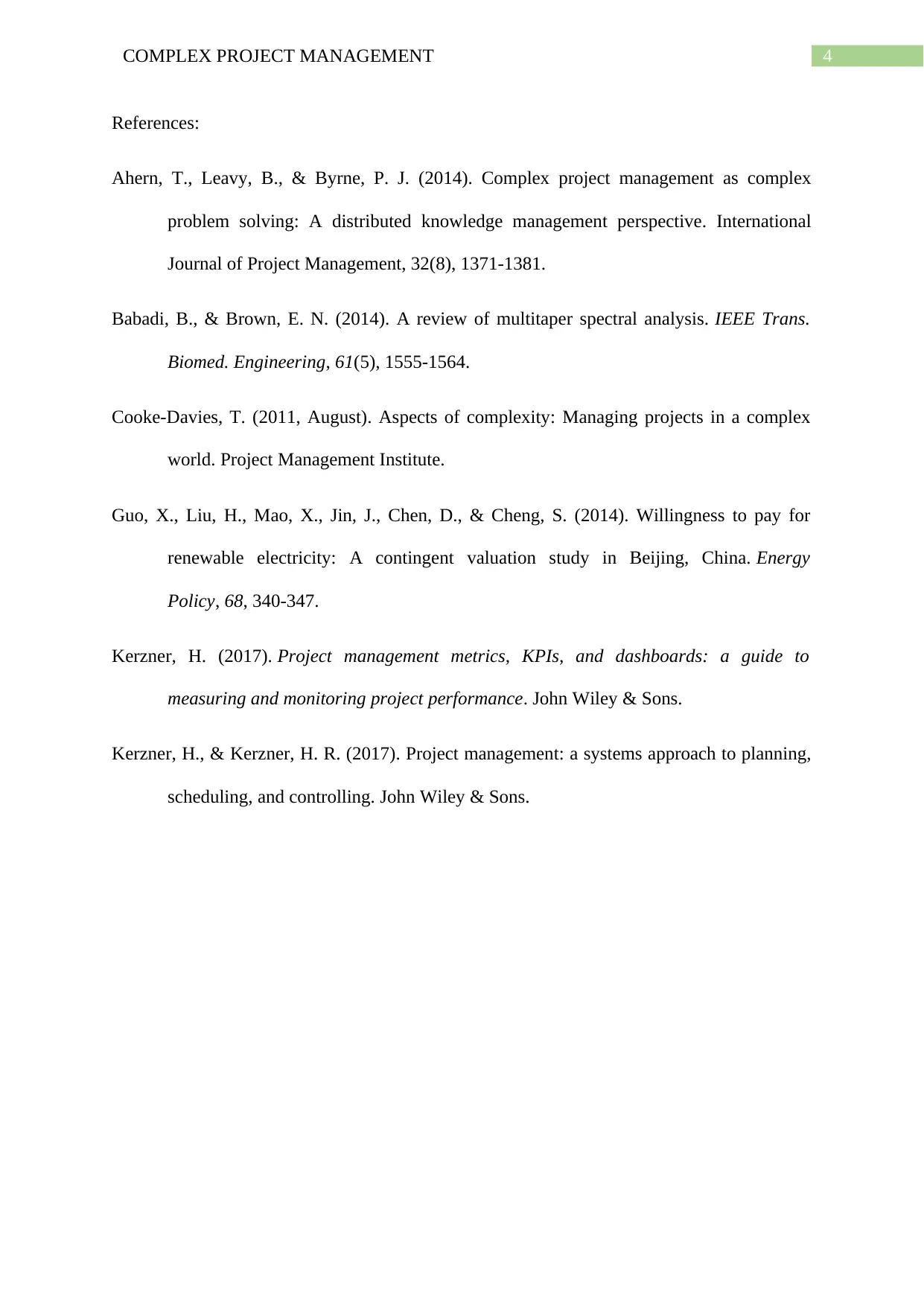Assessing Parametric Estimating in Non-Engineering Project Contexts
VerifiedAdded on 2023/06/07
|5
|1092
|158
Report
AI Summary
This report critically examines the application of parametric estimating, a technique often associated with engineering projects, to non-engineering domains, specifically welfare projects. It begins by defining parametric estimation and outlining its key aspects, referencing Terry Cooke-Davies' work on complexity. The report then investigates whether the methodology is appropriate for non-engineering projects, considering the potential for adapting the technique to different project types. The justification for the use of parametric estimating in non-engineering is explored by analyzing the commonalities between engineering and non-engineering projects such as the need for accurate cost and time estimations. The report emphasizes the importance of data collection, normalization, and hypothesis generation in the parametric estimation process. The conclusion suggests that parametric estimating can be used effectively in non-engineering projects, provided the necessary criteria are met. References to relevant literature are included to support the arguments presented.
1 out of 5










![[object Object]](/_next/static/media/star-bottom.7253800d.svg)